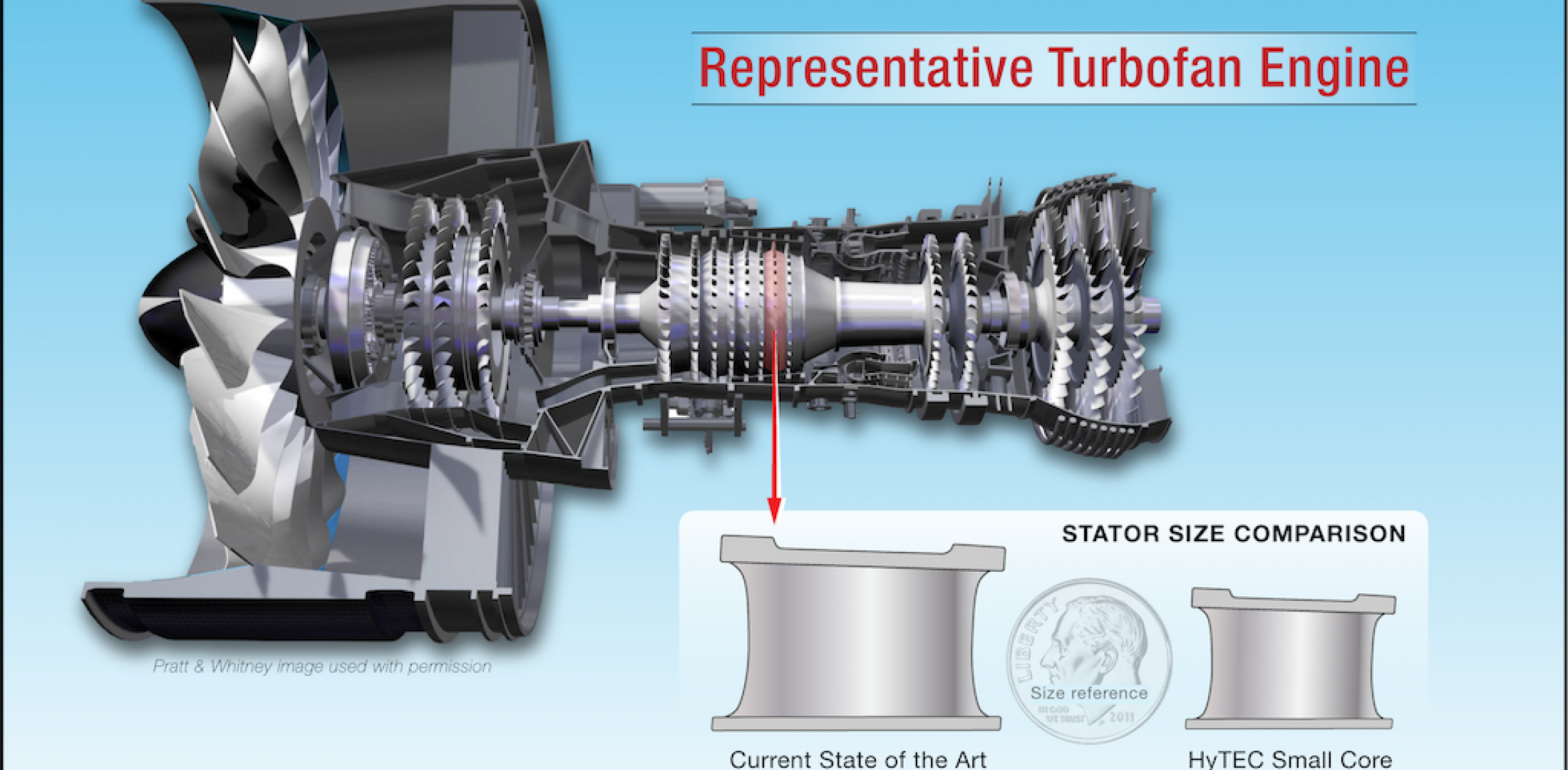Click Here to View This Page on Production Frontend
Click Here to Export Node Content
Click Here to View Printer-Friendly Version (Raw Backend)
Note: front-end display has links to styled print versions.
Content Node ID: 419275
NASA has awarded GE Aviation and Pratt & Whitney six new contracts for research and development of advanced engine cores for single-aisle airliners, the U.S. aeronautics agency said Wednesday. Worth a total of $18.8 million, the contracts concern NASA’s Hybrid Thermally Efficient Core (HyTEC) project, plans for which call for ground testing a new compact engine core by the mid-2020s.
The contracts involve four primary areas of study
NASA said it believes that shrinking an aircraft engine’s core can reduce fuel burn by 5 to 10 percent, creating a parallel reduction in emissions. The smaller engine cores also could extract about four times more power from the engine, an important consideration for future hybrid- and turbo-electric aircraft.
“These partnerships represent NASA’s commitment to quickly developing and advancing the small-core technologies needed to usher in sustainable flight,” said Tony Nerone, HyTEC’s project manager at NASA’s Glenn Research Center. “By collaborating with industry over the next two years, we’ll leverage their unique capabilities, investments, and knowledge to develop engines that produce more electric power, are more durable, and perform the same as or better than today’s turbofan engines while burning less fuel.”
NASA expects to conduct ground demonstrations of small-core engines by 2026. In the meantime, the agency will use its Electric Powertrain Flight Demonstration aircraft and its Electric Aircraft Testbed to further develop components and validate the benefits of electric flight.
For GE, the new contracts build on an award GE Aviation received in 2020 and managed under the HyTEC program. The 2020 award focused on maturing power extraction technology for a next-generation turbofan engine program.
The HyTEC awards, under NASA’s Sustainable Flight National Partnership, also complement NASA’s recent selection of GE Aviation for a megawatt-class hybrid-electric technology demonstrator.
GE Aviation is developing compact engine core designs as part of the CFM RISE (Revolutionary Innovation for Sustainable Engines) program, which was announced in June 2021. It plans a series of technology maturation efforts and demonstrators to increase propulsive and thermal efficiency while ensuring compatibility with alternative energy sources, including 100 percent sustainable aviation fuel and hydrogen. The technology roadmap includes open-fan architecture, hybrid electric capability, and a new compact core to target at least 20 percent lower carbon dioxide emissions than today's most efficient engines produce.
GE's Catalyst engine will power XTI's plan TriFan 600 hybrid-electric VTOL aircraft.
